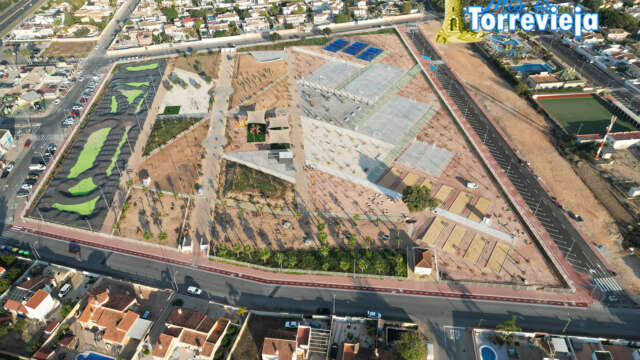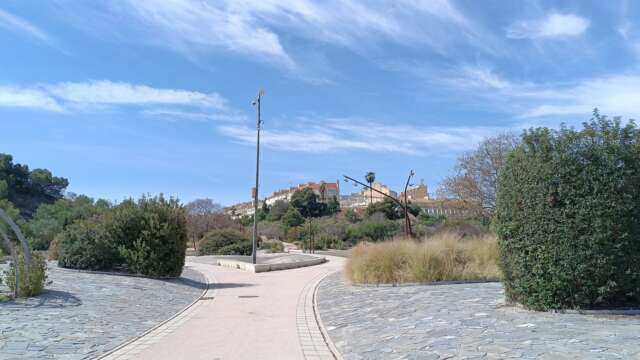Parque del Molina del Agua – Water Mill Park
Description
The natural area of "Parque del Molino del Agua" in Torrevieja is made up of a dune ecosystem that gives the area great importance, since it extends from the Salinas de Santa Pola to Cabo Cervera.
This natural space acts as a coastal corridor connecting two important wetlands, declared a Special Protection Area for Birds (ZEPA), the Salinas de Santa Pola Natural Park and the Lagunas de La Mata-Torrevieja Natural Park.
The Parque del Molino del Agua, which gives its name to this area, together with the promenade, are the two most anthropized spaces. In this place we have benches, tables and other equipment for public use.
The park is named after the water mill functions that the area used to perform, with more than 500 metres of underground aquifer galleries explain the location of the old well that existed there.
The most outstanding characteristic of this dune ecosystem are the different strips that exist from the seashore to the most inland part, being able to classify them into:
Embryonic dunes, close to the coast, where the grass ( Agropyron junceum ) appears together with the sea bell ( Calystegia soldanella ).
Mobile dunes, characterised by the continuous movement of the sand, in which we find species such as the marram ( Ammophila arenaria ), the beach spurge ( Euphorbia paralias ), the sea lily ( Pancratium maritimum) .
Interdune troughs, where the wind arrives more attenuated. Here appears the vegetal community of semi-fixed dunes which, like the previous one, is characterised by the influence of marine salinity. In this area we find the sea ruby ( Crucianella maritima) and the immortelle (Helichrysum stoechas ).
Fixed or stabilised dunes, occupied by Aleppo pine (Pinus halepensis ) and stone pine ( Pinus pinea) plantations, which due to the poor substrate and the lashing of the wind, adopt squat shapes with the trunks lying in the direction of the prevailing winds.
The high temperatures on the surface of the sand, the high dryness and scarce vegetation cover mean that the presence of fauna is quite limited. As a consequence, the best represented group is that of invertebrates, and within this the Coleoptera deserves special attention, with very common families in the dunes such as cicindélidos, tenebriónidos and beetles. Much of the striping of vegetation is also followed by these insects.
Regarding the herpetofauna, the Iberian skink ( Chalcides bedriagai ) stands out.
With regard to birdlife, despite not being an environment characterised by abundance of birds, it is possible to locate typically steppe species such as stone curlews (Burhinus oedicnemus), larks (Galerida cristata) and totovías ( Lullula arborea ).
There is ample parking on the street surrounding the park area, where you can leave the car and stroll through the park, passing the fountain that leads to a flowing channel through the park area, surrounded by picnic and seating areas, before the green area opens up to the sand dunes leading to the beach.

























































































